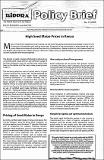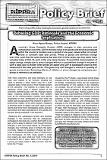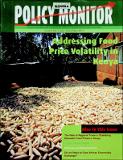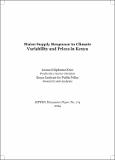| dc.date.accessioned | 2021-05-06T09:03:30Z | |
| dc.date.available | 2021-05-06T09:03:30Z | |
| dc.date.issued | 2006 | |
| dc.identifier.uri | http://repository.kippra.or.ke/handle/123456789/2917 | |
| dc.description | This policy brief is based on a study conducted by KIPPRA
in 2005, in collaboration with the Ministry of Agriculture,
Kenya Agricultural Research Institute (KARI}, and Tegemeo
Institute of Egerton University. The study uses value-chain
analysis to establish the costs of seed maize at various
stages of seed maize production, processing and
marketing, in order to determine the major factors
contributing to the high prices of seed maize in Kenya and
thus propose policy recommendations to reverse the
trend. | en |
| dc.description.abstract | Maize is the primary staple food crop in Kenya. It is the most frequently produced and marketed crop,grown by 90 percent of households and sold by more than 30 percent of the households in areas where the crop is grown. Maize dominates all national food security considerations. Maize production has, however, been on the decline, reducing from 2.7 million tonnes in 1995 to 2.1 million tonnes in 2004.Similarly, maize yields have declined by over 30 percent over the same period... | en |
| dc.language.iso | en | en |
| dc.publisher | The Kenya Institute for Public Policy Research and Analysis | en |
| dc.relation.ispartofseries | Policy brief No.13 of 2006; | |
| dc.subject | Maize prices | en |
| dc.subject | Agricultural sector | en |
| dc.subject | Non-price constraints | en |
| dc.subject | Maize market | en |
| dc.title | Policy Brief No. 13 of 2006 on High Maize Prices in Kenya | en |
| dc.type | KIPPRA Publications | en |




